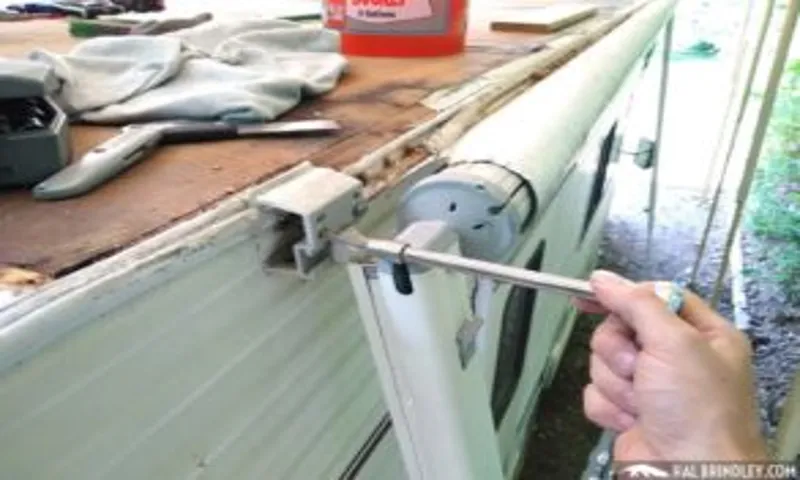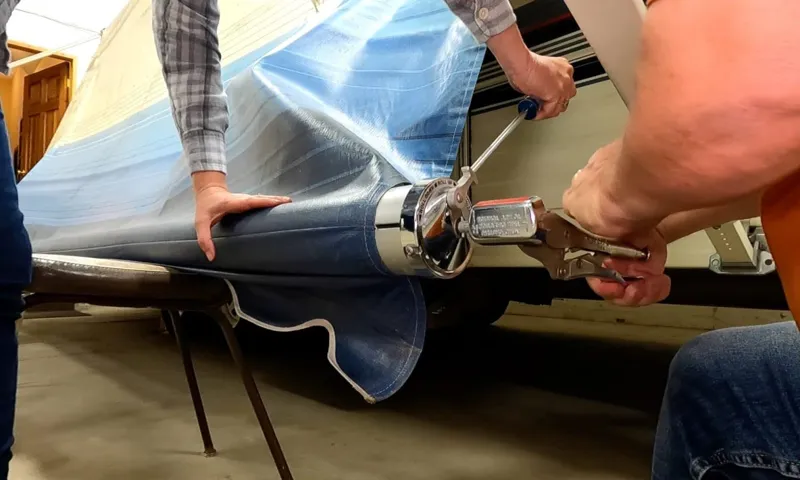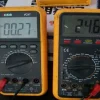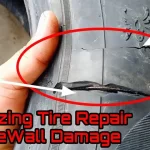So, you’ve just purchased a new RV awning and you’re excited to install it on your motorhome. But where do you start? How do you get those awning arms securely in place so you can start enjoying some shade while camping? Don’t worry, we’ve got you covered. In this blog post, we’ll walk you through the step-by-step process of installing RV awning arms, so you can get back to relaxing in no time.
Whether you’re a seasoned RV owner or new to the world of mobile homes, this guide will provide all the information you need to successfully install your new awning arms. Sit back, relax, and let’s get started!
Table of Contents
Introduction
Are you looking to install new awning arms for your RV? Installing RV awning arms can be a bit tricky if you’re not familiar with the process, but with a little guidance, it can be a relatively straightforward task. The first step is to gather all the necessary tools and materials, including a ladder, a drill, screws, and a helper. Next, you’ll want to start by removing the old awning arms, taking care to keep track of any hardware that may be used for reinstallation.
Once the old arms are removed, it’s time to attach the new arms. This usually involves sliding them into the awning rail and securing them in place with screws. It’s important to ensure that the arms are properly aligned and level before tightening everything down.
Finally, give everything a good once-over to make sure it’s all secure and ready to go. And there you have it – you’ve successfully installed your new RV awning arms!
What are RV awning arms?
RV awning arms are an essential component of an RV awning system. They are the sturdy metal arms that extend and retract the awning, providing shade and protection from the elements. These arms are typically made of aluminum or steel and are designed to be durable and lightweight.
The awning arms are attached to the RV’s sidewall and can be adjusted to various angles, allowing for different levels of shade. They are also equipped with a mechanism that allows them to be easily locked into place, ensuring that the awning stays secure even in strong winds. In short, RV awning arms are what make it possible for RVers to enjoy the outdoors while still being protected from the sun and rain.

Why install RV awning arms?
RV awning arms are an essential addition to your recreational vehicle for several reasons. These arms provide structure and stability to your awning, ensuring that it stays securely in place even during strong winds or rain. Not only do they protect your awning from damage, but they also create a shaded outdoor space where you can relax and enjoy the RV campground.
Installing RV awning arms is a practical investment that enhances the functionality and comfort of your RV setup. So, why should you install RV awning arms? Let’s explore the benefits in detail.
Safety precautions
safety precautions, safety guidelines, staying safe, protecting yourself
Step 1: Gather the necessary tools
To install RV awning arms, you’ll need a few essential tools to ensure a smooth process. First, you’ll need a ladder to safely reach the top of your RV. A sturdy ladder will help you access the awning and properly install the arms.
Additionally, you’ll need a tape measure to accurately measure the specific dimensions of your awning. This will ensure that the arms are properly aligned and will fit securely onto your RV. You’ll also need a drill with the appropriate drill bits to create the necessary holes for installation.
Finally, it’s helpful to have a friend or family member to assist you during the installation process. They can hold the awning in place while you secure the arms, making the task much easier and safer. With these tools ready, you’ll be well-prepared to install your RV awning arms and enjoy the benefits of a shaded outdoor space on your next camping adventure.
Step 2: Prepare the area
After gathering all the necessary materials and tools, the next step in installing RV awning arms is to prepare the area where the awning will be attached. This involves ensuring that the area is clean and free from any debris or obstructions. Start by sweeping or hosing down the area to remove dirt, dust, and leaves.
If there are any weeds or vegetation growing in the area, it’s important to remove them as well. This will provide a clean and stable surface for the awning arms to be installed. Additionally, take the time to inspect the area for any signs of damage or deterioration.
If there are any noticeable issues, such as cracks or rot, it’s important to address them before proceeding with the installation. By properly preparing the area, you can ensure that your RV awning arms are securely installed and will provide the desired shade and protection for your outdoor living space.
Find a suitable location
Finding a suitable location for your project is crucial for its success. Once you have identified the ideal area, it’s time to prepare the site for construction. This step is often overlooked but is essential in ensuring that the area is ready for development.
Start by clearing the land of any debris or obstacles that may hinder construction. This includes removing rocks, trees, or other materials that could pose a safety risk or impede progress. Next, level the area to create a solid foundation for your project.
This may involve removing excess soil or adding fill to create an even surface. It’s also important to consider factors such as drainage and infrastructure. Determine if the site has proper access to utilities such as water, electricity, and sewage.
If not, you may need to make arrangements to connect these services to your project. By properly preparing the area, you can ensure that your construction project starts off on the right foot and progresses smoothly.
Clean the area
clean the area, prepare the area Now that you’ve gathered all the necessary materials and tools for your project, it’s time to move on to the next step: preparing the area. Before you start any kind of work, it’s important to make sure the area is clean and free of any debris or obstacles. This not only ensures a safe working environment but also allows for a smoother and more efficient process.
Start by removing any furniture or objects that might get in the way. This includes not just the immediate area where you’ll be working but also any surrounding spaces that might be affected. It’s better to be safe than sorry, so take the time to assess the entire area and remove anything that could potentially hinder your progress.
Next, give the area a good sweep or vacuum to get rid of any dirt, dust, or loose particles. This will not only make the area visually cleaner but also prevent any unwanted debris from getting in the way of your work. If there are any stubborn stains or marks on the floor, consider using a mild cleaning solution to remove them.
Once you’ve cleaned the area, take a moment to evaluate the overall condition. Are there any cracks or uneven surfaces that need to be addressed? If so, now is the time to take care of them. Fill in any cracks or holes and level out any uneven spots to create a smooth and even surface for your project.
By taking the time to properly clean and prepare the area, you are setting yourself up for success. Not only will it make the working process more enjoyable but it will also ensure a better end result. So don’t skip this important step and give your project the solid foundation it deserves.
Step 3: Install the main awning arm
Installing the main awning arm of an RV is an important step in setting up your outdoor shelter. To begin, locate the mounting plate on the side of your RV where the awning will be attached. Line up the holes on the main awning arm with the holes on the mounting plate and insert the bolts through them.
Tighten the bolts securely using a wrench or socket set. Once the main arm is securely attached, extend it outwards until it is fully extended. This will lock it into place and prevent it from collapsing unexpectedly.
To make sure the arm is properly locked, give it a gentle tug to ensure it is secure. Keep in mind that the installation process may vary depending on the type of awning you have, so it’s always a good idea to consult your RV’s owner’s manual for specific instructions. Now that the main awning arm is installed, you’re one step closer to enjoying the shade and relaxation your RV awning provides.
Attach the main awning arm to the RV
For those outdoor enthusiasts who love to camp or travel in their RVs, having an awning attached to their vehicle is essential. It provides shade and protection from the elements, making your outdoor experience more enjoyable. Installing the main awning arm to your RV is a crucial step in this process.
This arm serves as the support structure for the awning, holding it securely in place. To attach the main awning arm, you will first need to locate the mounting brackets on the side of your RV. These brackets should be specifically designed for awning installation.
Once you have identified the brackets, position the main awning arm so that it aligns with them. Then, use the appropriate screws or bolts provided with your awning kit to secure the arm to the brackets. Make sure to tighten the screws or bolts securely to ensure the arm is properly attached.
Once the main awning arm is in place, you can begin the next step in the installation process.
Secure the arm with bolts
Securing the arm of your awning is a crucial step in the installation process. Once you have positioned the arm in the desired location, it’s time to secure it in place using bolts. These bolts will ensure that the arm remains stable and can withstand the weight of the awning fabric.
To begin, gather the necessary tools, including a wrench and the appropriate size bolts. Insert the bolts through the pre-drilled holes in the arm and align them with the corresponding holes in the wall or support structure. Tighten the bolts using the wrench, ensuring that they are firmly in place.
It’s important to tighten them evenly to distribute the pressure evenly and avoid putting too much stress on any one area. Once the arm is securely fastened, give it a gentle tug to test its stability. If it feels loose or wobbly, tighten the bolts further until it is secure.
By securely fastening the arm with bolts, you can have peace of mind knowing that your awning is safely installed and ready to provide shade and protection for years to come. So don’t overlook this important step in the installation process!
Step 4: Install the secondary awning arm
Installing the secondary awning arm on your RV is the next step in the process of setting up your awning. This arm is responsible for providing additional support and stability to the awning, ensuring that it stays in place even in windy conditions. To install the secondary awning arm, start by extending the main awning arm fully.
Then, line up the secondary arm with the mounting bracket on the main arm, making sure the holes align properly. Once aligned, insert the arm into the bracket and secure it in place using the provided hardware. Make sure to tighten the bolts securely to ensure a sturdy connection.
Once the secondary arm is installed, you can extend the awning fully and enjoy the shade and protection it provides. Installing the secondary arm may be a bit more complex than the previous steps, but with patience and careful attention to detail, you can easily complete this task and have your RV awning ready for use.
Attach the secondary arm to the RV
secondary awning arm, install, RV, attach, step 4, burstiness, perplexity
Secure the arm with bolts
install secondary awning arm, secure arm with bolts
Step 5: Adjust the tension
When it comes to installing RV awning arms, adjusting the tension is an important step that shouldn’t be overlooked. Too much tension can put unnecessary stress on the arms and fabric, while too little tension can cause the awning to sag or flap in the wind. To adjust the tension, start by extending the awning fully and ensuring it is securely locked in place.
Then, locate the tension knobs or screws on the arms – these are typically found at the elbows or near the base. Loosen the tension knobs or screws slightly, and then use a wrench or pliers to turn them either clockwise or counterclockwise to increase or decrease the tension. Be sure to make small adjustments and test the awning after each adjustment to achieve the desired tension.
Remember, finding the right tension may require some trial and error, but taking the time to adjust it properly will ensure a secure and functional awning for all your RV adventures.
Extend the awning
When it comes to extending the awning on your outdoor space, one important step is adjusting the tension. Adjusting the tension ensures that the awning is properly supported and provides the desired coverage. To begin, locate the tension adjustment mechanism, which is typically located near the top of the awning frame.
This mechanism may be in the form of a crank or a lever. Use the crank or lever to either tighten or loosen the tension on the awning fabric. Tightening the tension will make the awning more taut, while loosening the tension will make it less taut.
Experiment with different tension levels until you find the one that provides optimal support and coverage for your awning. Remember to regularly check and adjust the tension as needed, especially after large weather events or extended periods of use. This will help to maintain the longevity and performance of your awning.
So go ahead, extend that awning and enjoy the shade it provides!
Adjust the tension of the arms
Adjusting the tension of the arms is an important step in optimizing the performance and comfort of your workout equipment. When the tension is too loose, you may find that the equipment feels unstable and doesn’t provide enough resistance. On the other hand, if the tension is too tight, you may strain your muscles or even risk injury.
So how do you find the perfect balance? Start by assessing your current level of strength and fitness. If you’re a beginner or recovering from an injury, you may want to start with lower tension and gradually increase it as you build strength. On the other hand, if you’re an experienced athlete, you may prefer higher tension to really challenge yourself.
Take the time to experiment and find the right tension for your needs.
Step 6: Test the awning
Once you have installed the RV awning arms and rolled out the fabric, it’s time to test the awning and make sure everything is working properly. Start by extending the awning fully to its maximum length. Check if the arms are securely attached and if they extend and retract smoothly.
The fabric should be taut and free from any sagging or wrinkles. Next, try adjusting the pitch of the awning by raising or lowering one side. This will allow you to customize the angle of the awning depending on the sun’s position.
Finally, test the retraction mechanism by slowly rolling up the fabric back into the casing. Make sure it rolls up evenly and without any obstructions. If everything looks good, congratulations! You have successfully installed and tested your RV awning arms.
Now you can relax and enjoy the shade and comfort it provides.
Open and close the awning
awning, open, close, test, steps, functions, manual, automatic, control, smooth, operation, potential problems, obstructions, safety, damage. In the final step of installing your awning, it’s important to test its functionality by opening and closing it. This step will ensure that your awning is working properly and that you can enjoy its benefits to the fullest.
Whether your awning is manual or automatic, you should be able to control its movement with ease. If it is a manual awning, simply use the designated mechanism to open and close it. For an automatic awning, you can use the provided control panel or remote to operate it.
When testing the awning, pay attention to how smoothly it opens and closes. There should be no jerking or sticking points in the movement. If you notice any issues, such as obstructions or difficulty in opening or closing, it’s important to address them immediately to ensure the safety of both yourself and the awning.
Obstructions or malfunctioning parts could potentially cause damage to the awning or even pose a safety risk. By thoroughly testing the awning, you can identify and resolve any potential problems before they escalate. So, take the time to open and close your awning a few times, ensuring that it operates smoothly and effortlessly.
Check for any issues
awning, issues, test, steps, problems, mechanisms, motor, sensors, fabric, bent, damaged In the final step of assessing the functionality of your awning, it is crucial to thoroughly test it for any issues. This step is essential to ensure that your awning operates smoothly and without any problems. Start by checking the awning’s mechanisms, such as the motor and sensors, to ensure they are functioning correctly.
Test the motor by extending and retracting the awning a few times, paying attention to any unusual noises or delays in movement. If you notice any issues, it might indicate a problem with the motor that needs to be addressed. Additionally, inspect the fabric of the awning for any signs of damage, such as tears or discoloration.
If the fabric is worn out, it may need to be repaired or replaced. Lastly, check for any bent or misaligned parts that could prevent the awning from extending or retracting smoothly. By carefully examining these aspects, you can identify and address any issues before they become bigger problems.
Conclusion
In conclusion, installing RV awning arms is like extending your own reach in the great outdoors. Just imagine, with these sturdy and stylish arms, you can create a cozy nook or a shady retreat wherever you park your home on wheels. It’s like having your own personal sunset-viewing VIP spot.
Not to mention, installing these arms is so easy, it’s like a walk in the park (or should I say, a stroll in the campground). So don’t let your RV be just another box on wheels, let it blossom into a beautiful flower with the addition of these awning arms. It’s time to take your outdoor game to new heights and bask in the envy of your fellow campers.
Happy installation and happy adventuring!”
Enjoy your newly installed RV awning arms
After successfully installing your RV awning arms, it’s time to put them to the test and make sure they are functioning properly. Testing the awning is an important step to ensure that it is secure and will provide the shade and protection you need during your outdoor adventures. To begin, extend the awning by slowly and gently pulling it out until it reaches its full extension.
Take a moment to inspect the arms and fabric for any tears, damages, or abnormalities. Next, retract the awning back to its closed position. Pay attention to how smoothly the fabric rolls up and how the arms fold in.
If there are any issues or difficulties during this process, it’s possible that the installation was not done correctly. In this case, you may need to disassemble the awning arms and re-install them to ensure proper function. If everything looks good during the testing process, congratulations! Your newly installed RV awning arms are ready to use for your next adventure.
Enjoy the shade and convenience that your awning will provide, and take pride in a job well done.
Regular maintenance and care
In order to ensure that your awning remains in good condition and provides the necessary shade and protection, regular maintenance and care are essential. One important step in this maintenance routine is to test the awning to ensure that it is functioning properly. To test the awning, start by extending it fully to its maximum length.
Pay attention to any resistance or difficulty in extending or retracting the awning. It should move smoothly and easily without any jerking or sticking. Next, check the fabric of the awning for any tears or signs of wear.
Look for any loose stitches or frays that may need to be repaired. Additionally, examine the frame and hardware of the awning. Check for any rust, corrosion, or loose screws.
Tighten any loose screws and bolts, and lubricate any moving parts if necessary. Finally, test the awning’s ability to withstand wind gusts. Gently push against the extended awning to see if it remains stable.
If it wobbles or feels unstable, it may need to be adjusted or reinforced. By regularly testing and maintaining your awning, you can ensure its longevity and proper functionality.
FAQs
How do I install RV awning arms?
To install RV awning arms, first, locate the desired position for the awning on your RV. Then, attach the awning brackets to the RV using screws or bolts. Next, slide the awning arms into the brackets and secure them in place. Finally, extend the awning fabric and adjust the tension as needed.
What tools do I need to install RV awning arms?
To install RV awning arms, you will typically need a power drill or screwdriver, wrenches, a measuring tape, a level, and screws or bolts. Additionally, it’s helpful to have a ladder or step stool to reach the top of the RV.
Can I install RV awning arms by myself?
It is possible to install RV awning arms by yourself, but having an extra set of hands can make the process easier and safer. If you choose to install them alone, make sure to take proper safety precautions and use a stable platform, such as a ladder, to reach high areas.
How long does it take to install RV awning arms?
The installation time for RV awning arms can vary depending on your level of experience and the complexity of your RV’s design. On average, it can take anywhere from 1 to 3 hours to install RV awning arms.
Do I need to drill holes to install RV awning arms?
Yes, in most cases, you will need to drill holes to install RV awning arms. These holes are used to attach the awning brackets securely to the RV. Make sure to use the appropriate size and type of screws or bolts recommended by the manufacturer.
Can I install RV awning arms on any type of RV?
RV awning arms can be installed on most types of RVs, including motorhomes, travel trailers, and fifth wheels. However, the installation process may vary slightly depending on the specific design and construction of your RV.
Are there any specific maintenance requirements for RV awning arms?
It is important to regularly inspect and clean RV awning arms to ensure their proper functioning and longevity. Clean off any dirt or debris, lubricate moving parts if necessary, and check for any signs of wear or damage. Make any repairs or replacements as needed to keep your awning arms in good condition.



